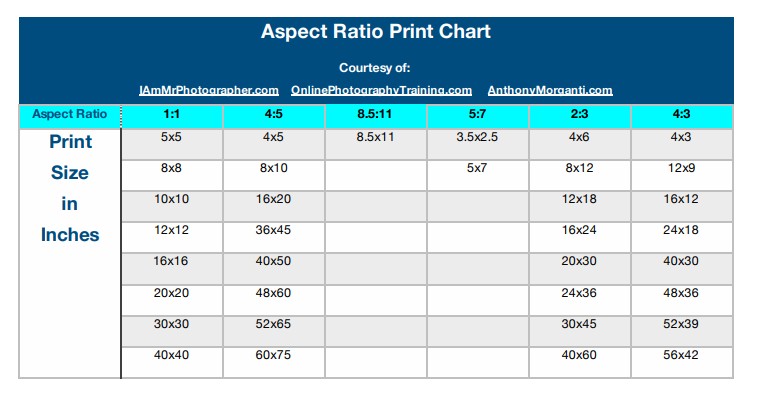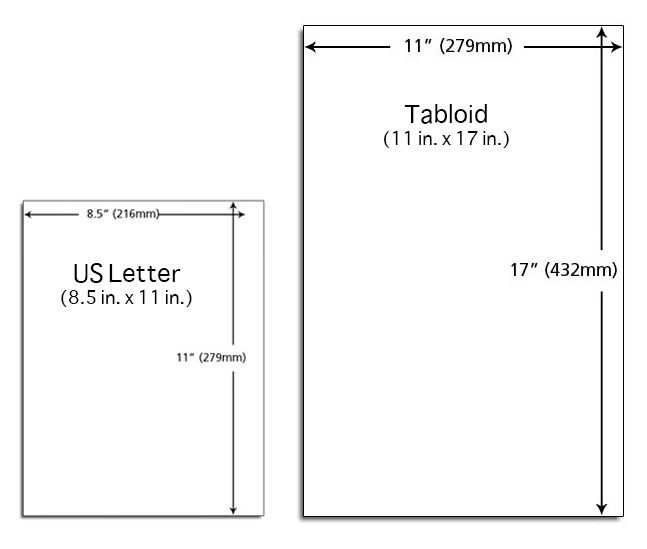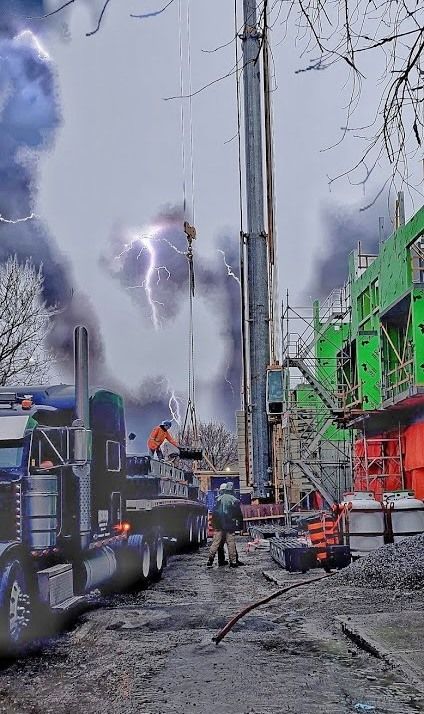Aspect Ratio?
Sep 14, 2021 22:20:48 #
Longshadow wrote:
Got off the subject of printing a single image did we?
Of course. That was my point. There has to be a way to express H or V with aspect ratios and (because regular folks understand them) sizes. Otherwise, labs and printers have lots of remakes and disappointed customers.
Sep 15, 2021 07:11:41 #
burkphoto wrote:
Of course. That was my point. There has to be a way to express H or V with aspect ratios and (because regular folks understand them) sizes. Otherwise, labs and printers have lots of remakes and disappointed customers.
Then there are those who don't care if one image is 8x10 or 10x8 for an individual print.
They'll just rotate the frame.
Why complicate things.
Sep 15, 2021 09:33:42 #
goldenyears wrote:
I have assumed it's always better to capture the most pixels and crop post-production. In what situations would it be desirable to use a non-native preset aspect ratio to crop the image versus post-production cropping?
Video
Selfie Booth
SOOC to Website
Sep 15, 2021 10:57:29 #
User ID wrote:
Video
Selfie Booth
SOOC to Website
Selfie Booth
SOOC to Website
I'm in the middle of a large LARGE project of capturing digital files from decades of film negatives and slides, via macro lens and digital camera. I'm using my 4:3 aspect ratio camera on 3:2 35mm film, 6x6cm and 6x4.5cm medium format film, and old size 616 negatives that are decidedly huge. So for many images, the aspect ratio settings come in handy.
Sep 17, 2021 06:39:38 #
Ednsb
Loc: Santa Barbara
CHG_CANON wrote:
I'm not sure where I came up with 5:3 earlier, but now too late to correct. The EOS is 3:2.
Regarding changing the aspect ratio, one would do it to save time such as another time-saving step for SOOC results at a non 3:2 aspect. I wouldn't do it, but I shoot in RAW and expect to process each and every image, including making individual cropping decisions for each and every individual image.
Regarding changing the aspect ratio, one would do it to save time such as another time-saving step for SOOC results at a non 3:2 aspect. I wouldn't do it, but I shoot in RAW and expect to process each and every image, including making individual cropping decisions for each and every individual image.
Whew, it’s 3:30 am (dogs had to you know what) read your post and went wtf. Now I’m wide awake. Laughs.
Sep 18, 2021 18:15:09 #
Knowing how to control aspect ratios in your composition can be very important depending on what you are shooting. I learned that early in the game both in wedding/portrait photograhy and commercial work. When I was a trainee in a studio, the boss said "you can put a square peg in a round hole kinda thing and you can't print an image that is composed for a 5x7 print (5:7) and make a perfect 8x10 (4:5) print. Too simple- in those days most weddig albums were made fo 8x10 prints, we shot on 4x5 negatives and made 4x5 proofs and parent's albums and the formal portrait was 16x20. Most standard pre-manufactured picture frames were in the aforementioned 4:5 ratio. Weh we made the transition in roll film, the 2 1/2 square cameras were popular so Rolleiflex users had to learn to leave space to accommodate the almighty 8x10. They came to a plethora of so-called ideal format cameras- 2 1/4 x 2 3/4 (6x7 cm) so we were back in the saddle to fill the negative and make the prints. Then came a glitch for 'ideal format" habituates- the 10x10 wedding album- you didn't need mattes or have to reorient the album for horizontal or vertical prints. So, you could operate 2 systems, square and 6x7 or 6x 4.5, trade-in you Linhof Pres 70 or Mamiya Press, or Koni-Omega Raped for a Rolleiflex, or simply learn how to leave enoug space to accommodate odd formats.
Of course nowadays, for folks like me who still make and sell albums there are all kinds of more sophistical multi-format albums that can accommodate standard sizes, odd sizes, panoramics, ovals, circles, multiple images on a page, and more. You still have to know how to plan for any of these various formats. As for picture framing- I do all custom frames and matter so any ratio can be accommodated.
Is the "ideal format" really all that ideal? That is a discussion for anoter long post or perhaps a thesis. Some research shows that ratios and proportions used by an Old Master and classical artists (painters) are the roots of what we now consider aesthetically correct. Someof this is traced back to early mathematicians who came up with theories of divine proportions. The rule of thirds is the tip of the iceberg
In commercial work, the aspect ratio is addressed by photographers on a daily basis. Simply stated, the image has to fit into specific layouts, boxes, frames, page sizes, product label size, and proportions, various screens, TV formats, billboard formats, you name it!
None of this means that you must conform to any aspect ratio unless you need to. Having certain variations in your camera can be helpful in certin cases. With today's camer with very high pixel counts, losing a few pixels should not seriously degrade your images. It was more problematic with film, especially in the 35mm format where if you allowed enoug space to accommodate cert ratios grain and acutance could be seriously affected.
Here is a link to a very comprehensive tutorial on aspect ratio. Also, see the attached chart.
https://phlearn.com/magazine/how-to-know-which-aspect-ratio-to-use-in-your-photography/
Of course nowadays, for folks like me who still make and sell albums there are all kinds of more sophistical multi-format albums that can accommodate standard sizes, odd sizes, panoramics, ovals, circles, multiple images on a page, and more. You still have to know how to plan for any of these various formats. As for picture framing- I do all custom frames and matter so any ratio can be accommodated.
Is the "ideal format" really all that ideal? That is a discussion for anoter long post or perhaps a thesis. Some research shows that ratios and proportions used by an Old Master and classical artists (painters) are the roots of what we now consider aesthetically correct. Someof this is traced back to early mathematicians who came up with theories of divine proportions. The rule of thirds is the tip of the iceberg
In commercial work, the aspect ratio is addressed by photographers on a daily basis. Simply stated, the image has to fit into specific layouts, boxes, frames, page sizes, product label size, and proportions, various screens, TV formats, billboard formats, you name it!
None of this means that you must conform to any aspect ratio unless you need to. Having certain variations in your camera can be helpful in certin cases. With today's camer with very high pixel counts, losing a few pixels should not seriously degrade your images. It was more problematic with film, especially in the 35mm format where if you allowed enoug space to accommodate cert ratios grain and acutance could be seriously affected.
Here is a link to a very comprehensive tutorial on aspect ratio. Also, see the attached chart.
https://phlearn.com/magazine/how-to-know-which-aspect-ratio-to-use-in-your-photography/

Sep 18, 2021 20:56:21 #
E.L.. Shapiro wrote:
Knowing how to control aspect ratios in your compo... (show quote)
I’ve been learning from this discussion. I had googled popular print sizes for selling and read that 11”x17” or 17”x11” is a best seller. Has anyone else seen that to be true? If it is, it’s one more ratio to add to the chart.
Sep 18, 2021 21:18:34 #
Craigdca wrote:
I’ve been learning from this discussion. I had googled popular print sizes for selling and read that 11”x17” or 17”x11” is a best seller. Has anyone else seen that to be true? If it is, it’s one more ratio to add to the chart.
The chart is just a basic guide. You can determine the aspect ratio of any 2 dimensions (Height and Width)
11x17 is 1.54:1
I don't know why that particular size would "sell" more than any other size.
If you are selling prints as art, you should decide on proportions that best addresses the composition.
Sep 18, 2021 21:40:26 #
E.L.. Shapiro wrote:
...
I don't know why that particular size would "sell" more than any other size.
...
...
I don't know why that particular size would "sell" more than any other size.
...
I've never known anyone to get an 11x17 in 50 years.

Sep 18, 2021 22:14:14 #
Longshadow wrote:
I've never known anyone to get an 11x17 in 50 years. 

I knew this was the right place to ask about it. Can’t believe everything I read on the internet! 👍
Sep 18, 2021 22:17:56 #
E.L.. Shapiro wrote:
The chart is just a basic guide. You can determine the aspect ratio of any 2 dimensions (Height and Width)
11x17 is 1.54:1
I don't know why that particular size would "sell" more than any other size.
If you are selling prints as art, you should decide on proportions that best addresses the composition.
11x17 is 1.54:1
I don't know why that particular size would "sell" more than any other size.
If you are selling prints as art, you should decide on proportions that best addresses the composition.
Thanks for the advice on that. While I have a lot to learn, it’s good to know I’m surrounded by skilled pros here.
Sep 19, 2021 00:58:06 #
Craigdca wrote:
I knew this was the right place to ask about it. Can’t believe everything I read on the internet! 👍
There is no wrong with a print in an 11 x 17 Size and it may not fit, edge to edge, on a standard monitor screen in horizontal orientation, It is not a standard size offered by commercial photofinsihers. It is, however, a standard paper size used in the production of posters. In the lithographic printing trade, it is called poster or tabloid size.
So, one may say there is no such size as say, 8 x24 inches but you can make a panoramic print in that size, why not?
An image like the one I am attaching can easily fit into that format.


Sep 19, 2021 01:42:37 #
E.L.. Shapiro wrote:
There is no wrong with a print in an 11 x 17 Size ... (show quote)
Thanks for that, and I was careful to also mention 17”x11” as I’m a quick learner. My search for popular sizes that sell led me to an article on packaging prints for art fairs and the like. They mentioned this size but not if it was matted or edge to edge. I’m just curious about what size prints to produce when I’m ready to try selling.
Sep 19, 2021 03:26:19 #
E.L.. Shapiro wrote:
Knowing how to control aspect ratios in your compo... (show quote)
The link provides an interesting enough read, but has no conclusion, except that the subject has no conclusion.
My own preference, for many years has been 4:3, not surprising, as I'm devoted to M4/3 equipment.

Sep 19, 2021 07:00:00 #
Longshadow wrote:
I've never known anyone to get an 11x17 in 50 years. 

Nor have I, a 33-year pro photo lab veteran.
10x13 is a size offered in the school portrait industry, but it was not popular.
If you want to reply, then register here. Registration is free and your account is created instantly, so you can post right away.




